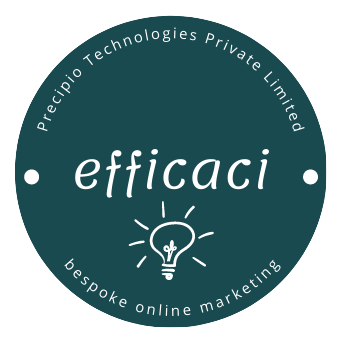In the digital world, where algorithms court human attention and search engines play matchmaker, SEO & Content form one of the most enduring partnerships. Imagine SEO as the charismatic strategist, always planning the next move to win over the crowd, while Content is the heartfelt storyteller, drawing people in with depth and authenticity. Their relationship isn’t just functional—it’s romantic, a dance of mutual dependence where one thrives because of the other.
Without SEO, content might languish in obscurity, like a love letter never sent. Without content, SEO is an empty promise, a grand gesture with no substance. This article explores the intricate romance between SEO & Content, delving into the types of content that can be used, the paramount importance of content quality, keyword parameters that spark initial attraction, the role of AI as a modern suitor, and strategies for repurposing content to keep the flame alive.
By understanding this dynamic, businesses and creators can foster a lasting bond that drives visibility, engagement, and growth in the ever-evolving landscape of search engines.
The First Date: Understanding the Basics of SEO & Content
Every great romance starts with a spark, and in the realm of digital marketing, that spark is the realization that SEO & Content are inseparable. SEO, or Search Engine Optimization, is the art and science of making your online presence discoverable through search engines like Google. It involves technical tweaks, link-building, and user experience enhancements to climb the ranks of search results. Content, on the other hand, is the substance—the blog posts, videos, infographics, and more that provide value to your audience.
But why frame this as a romance? Because, like any couple, SEO & Content must align their goals to succeed. SEO without quality content is like a suitor who talks a big game but has no depth; it might attract fleeting glances but won’t build loyalty. Conversely, stellar content without SEO is a hidden gem, buried where no one can find it. According to Google’s guidelines, the focus should be on creating “people-first content” that is helpful and reliable, rather than content engineered solely for search engines. This philosophy underscores the romantic ideal: true connection comes from authenticity, not manipulation.
In 2025, as AI-driven search evolves, the basics remain rooted in user intent. Search engines prioritize content that answers queries effectively, with features like AI Overviews expanding to all queries, making it crucial for SEO & Content to adapt. For instance, optimizing for voice search and mobile experiences is now non-negotiable, as users expect quick, conversational answers. The romance begins when creators recognize that SEO strategies must enhance, not overshadow, the content’s natural appeal.
Types of content that can be used in this partnership are diverse, much like the ways couples express affection. Blog posts remain a staple, offering in-depth explorations of topics. Videos capture attention on platforms like YouTube, where visual storytelling reigns. Infographics simplify complex data, making them shareable and link-worthy. Podcasts tap into audio preferences, while social media snippets provide bite-sized engagements. E-books and whitepapers establish authority, and user-generated content, like reviews, adds authenticity. The key is versatility—choosing formats that resonate with your audience while aligning with SEO goals, such as incorporating alt text for images or transcripts for videos to improve accessibility and crawlability.
Building Attraction: Keyword Parameters in SEO & Content
Keywords are the flirtatious glances that draw SEO & Content together, signaling intent and relevance. In this romance, keyword parameters are the criteria that determine if the attraction is mutual and sustainable. Effective keyword research isn’t about stuffing phrases; it’s about understanding what your audience seeks and how search engines interpret those searches.
Start with relevance: Keywords must align with your content’s core message. For example, if you’re writing about sustainable fashion, target terms like “eco-friendly clothing brands” rather than generic “clothes.” Assess user intent—informational (e.g., “how to recycle clothes”), navigational (e.g., “best thrift stores near me”), or transactional (e.g., “buy organic cotton shirts”). Tools like Ahrefs or SEMrush help gauge search volume, which indicates popularity; aim for a balance where volume is high but competition (keyword difficulty) is manageable.
Other parameters include long-tail keywords, which are longer phrases with lower competition but higher conversion potential, like “best sustainable fashion tips for beginners.” Consider seasonality—terms like “summer eco-outfits” peak in certain months. Topical authority is another factor; group keywords into clusters around pillars, such as a main topic like “sustainable living” with subtopics branching out. In 2025, with AI personalizing results, focus on semantic search—related terms that provide context, like synonyms or questions users might ask.
Brainstorming is the first phase: List core topics, then use software for expansion. Research involves analyzing competitors’ rankings and refining based on metrics like click-through rates. Organize keywords into a strategy: Primary for main pages, secondary for supporting content. This structured approach ensures SEO & Content attract the right audience, fostering deeper engagement.
For instance, a case study from a digital agency showed that targeting intent-based keywords increased organic traffic by 40% within six months. By weaving keywords naturally— in titles, headers, meta descriptions, and body text—you create a seamless narrative that search engines love, much like how subtle compliments build romantic tension without overwhelming.
Deepening the Bond: Creating High-Quality Content in SEO & Content
As the relationship matures, quality becomes the glue holding SEO & Content together. High-quality content isn’t just well-written; it’s valuable, engaging, and trustworthy, embodying Google’s E-E-A-T principles: Experience, Expertise, Authoritativeness, and Trustworthiness. This means demonstrating real-world knowledge, backing claims with sources, and earning credibility through backlinks and user signals.
What makes content high-quality? First, it’s user-focused: Write for readers, not algorithms, addressing their pain points with clear, readable language. Use short paragraphs, subheadings, and bullet points for scannability. Engage with storytelling, questions, and calls to action. Relevance is key—content should match search intent, providing comprehensive answers without fluff.

Accuracy and originality are non-negotiable; plagiarized or outdated info erodes trust. Incorporate multimedia for richness, like images with descriptive alt text to boost SEO. Mobile optimization ensures accessibility, as over half of searches are mobile. High-quality content also loads quickly and is error-free, enhancing user experience.
In practice, quality drives SEO success. Sites with in-depth, helpful content rank higher because they reduce bounce rates and increase dwell time. For example, a blog post that thoroughly explains a topic, complete with data visualizations and expert quotes, not only satisfies users but also attracts shares and links, amplifying its reach.
To create such content, start with research: Understand audience needs via surveys or analytics. Outline structure around key points, then draft with a focus on value. Edit ruthlessly for clarity and flow. Tools like Grammarly aid polishing, while SEO platforms suggest optimizations. Remember, quality content builds loyalty, turning one-time visitors into repeat engagements, much like how shared experiences strengthen a romantic bond.
The Modern Twist: AI in SEO & Content Creation
Enter AI, the intriguing third party in the romance of SEO & Content. Like a tech-savvy matchmaker, AI tools can enhance creation, but they must be handled with care to avoid disrupting the harmony. AI-generated content isn’t inherently bad for SEO; Google accepts it if it’s helpful and not manipulative. However, lazy AI output—generic, unedited text—can harm rankings by lacking E-E-A-T.
The impact of AI on SEO is profound. It scales production, allowing faster drafting of outlines or ideas. Pros include efficiency: AI analyzes data for insights, suggests keywords, and even personalizes content. For instance, tools like ChatGPT can generate initial drafts, freeing humans for refinement. In content marketing, AI boosts performance for 34% of users, with no change for 19% and harm for only 6%.
Cons arise when AI produces low-quality, duplicate content, which search engines penalize. It may lack nuance or originality, failing to capture voice or expertise. Over-reliance can strain Google’s resources or reduce traffic for informational queries. Best practices: Use AI as an assistant—edit outputs for accuracy, add personal experiences, and ensure uniqueness. Combine with human oversight to maintain authenticity.
In 2025, AI overviews and answer engines shift focus to interactive, high-value content. For SEO & Content, this means leveraging AI for personalization while prioritizing human elements. A balanced approach—AI for ideation, humans for storytelling—keeps the romance vibrant, preventing AI from becoming a jealous rival.
Keeping the Spark Alive: Repurposing Content for Ongoing SEO Success
No romance endures without effort, and in SEO & Content, repurposing is the renewal of vows, extending lifespan and reach. Content repurposing involves transforming existing assets into new formats or for different platforms, boosting SEO by expanding keyword coverage and backlinks.

Why repurpose? It saves time, leveraging past investments while maintaining publishing frequency. Strategies include turning blog posts into videos, infographics, or podcasts. For example, a long-form article can become social media threads, email newsletters, or webinars. Atomize content: Break videos into clips, or adapt visuals for different channels.
For SEO benefits, update with fresh data, target new keywords, and optimize for platforms. Repurposing fills content gaps, addresses evolving audience needs, and builds topical clusters. Analytics guide choices: Identify high-performers via Google Analytics, then refresh for seasonality.
Creative ways: Convert webinars to blog series, or user data into case studies. This multiplies touchpoints, improving visibility across search engines and social media. In B2B, repurposing drives growth by reaching diverse audiences without starting from scratch. Done right, it reignites interest, ensuring SEO & Content remain dynamic and engaging.
Types of Content: The Many Ways to Express Love of SEO for Content
Diversity keeps romance exciting, and in SEO & Content, varied content types express value in myriad ways. Evergreen content, like guides, provides timeless utility, steadily building traffic. Timely pieces, such as news articles, capitalize on trends for quick wins. Interactive content—quizzes, polls—boosts engagement, signaling quality to algorithms.
Visual content, including images and videos, enhances shareability; optimize with SEO elements like file names and captions. Audio formats like podcasts tap into on-the-go consumption, transcribed for text-based SEO. Long-form content (over 2000 words) demonstrates depth, ideal for complex topics, while short-form suits social snippets.
User-generated content fosters community, adding authenticity and fresh keywords. Gated content, like e-books, captures leads while establishing expertise. The romance flourishes when types align with strategy: Use data to match audience preferences, ensuring each piece contributes to the overall narrative.
Conclusion: The Lasting Relationship Between SEO & Content
The romance of SEO & Content is a testament to synergy: When nurtured, it yields unparalleled results. By prioritizing quality, mastering keywords, embracing AI wisely, and repurposing strategically, you create a resilient partnership that withstands algorithm changes and competition. In 2025, as search becomes more AI-centric, remember the core: Authenticity and value win hearts—and rankings. Foster this bond, and watch your digital presence blossom into a love story for the ages.


0 Comments